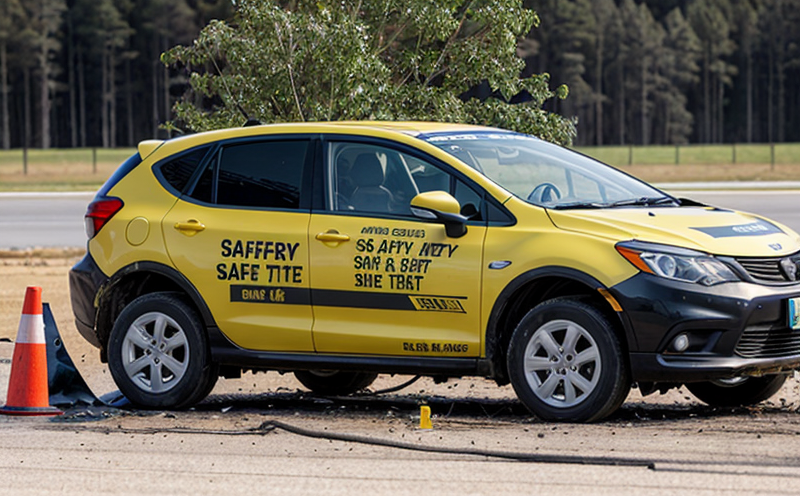Safety and Crash Testing: Ensuring the Protection of Lives on the Road
The world of automotive safety has undergone a significant transformation over the years. From the introduction of seatbelts to advanced driver-assistance systems (ADAS), manufacturers have been working tirelessly to make vehicles safer for occupants. One crucial aspect of this effort is crash testing, which plays a vital role in evaluating a vehicles ability to withstand collisions and protect its passengers.
Crash testing involves subjecting a vehicle to various impact scenarios, including frontal crashes, side impacts, and rollovers. The results are then used to determine the overall safety rating of the vehicle, providing valuable insights for manufacturers, regulators, and consumers alike. In this article, we will delve into the world of safety and crash testing, exploring its significance, methodologies, and implications.
The Importance of Crash Testing
Crash testing serves as a critical tool in assessing a vehicles safety performance. By simulating various crash scenarios, engineers can identify areas of improvement and design safer vehicles that protect occupants better. This process involves a series of tests, including:
Frontal crashes: A vehicle is subjected to a frontal impact at speeds ranging from 30-60 km/h (18-37 mph). The test evaluates the vehicles ability to absorb energy and minimize damage to its structure.
Side impacts: A moving barrier collides with the vehicles side, simulating a real-world scenario where another vehicle crashes into it. This test assesses the vehicles strength in resisting lateral forces and protecting occupants from injury.
The data collected from these tests is used to assign safety ratings, which are often displayed on websites like Euro NCAP (New Car Assessment Programme) or IIHS (Insurance Institute for Highway Safety). These ratings provide valuable information for consumers, allowing them to make informed decisions when purchasing a vehicle.
Crash Testing Methods and Technologies
Advanced crash testing involves the use of sophisticated equipment and simulation tools. Some of the methodologies employed include:
Computer-aided engineering (CAE): CAE software models the behavior of materials under various stress conditions, predicting how a vehicle will perform in different crash scenarios. This process enables engineers to optimize designs, reducing computational time and costs.
High-speed cameras: High-speed cameras capture images at rates up to 10,000 frames per second, providing detailed footage of crashes. This data is used to evaluate occupant kinematics, injury mechanisms, and structural performance.
Crash testing also employs various technologies, such as:
Airbags: Inflatable airbags deploy during a crash to cushion occupants from impact forces. The latest models feature advanced sensors that adjust airbag deployment based on the severity of the collision.
Electronic stability control (ESC): ESC systems use sensors and algorithms to monitor vehicle stability and intervene when necessary, preventing skidding or rollover incidents.
QA Section
1. What is Euro NCAP?
Euro NCAP is a non-profit organization that conducts safety testing and rating of new cars sold in Europe. Their ratings are based on a comprehensive evaluation of crash tests, which assess the vehicles ability to protect occupants in various scenarios.
2. How do IIHS ratings differ from Euro NCAP ratings?
IIHS ratings focus primarily on real-world crash data, while Euro NCAP emphasizes laboratory testing and simulation. Both organizations aim to provide accurate assessments of a vehicles safety performance, but with different methodologies.
3. What is the purpose of rollover testing?
Rollover testing simulates scenarios where a vehicle rolls over due to loss of traction or other factors. This helps manufacturers identify areas for improvement in roof strength and structural integrity, ultimately reducing the risk of occupant ejection during rollovers.
4. How often are vehicles crash tested?
Manufacturers typically conduct crash tests on new models before their release, with some performing additional tests throughout the models lifecycle to ensure ongoing safety performance.
5. What is the significance of advanced safety features like automatic emergency braking (AEB)?
AEB systems detect potential collisions and apply brakes automatically to prevent or mitigate impacts. This feature has been shown to significantly reduce injury rates in real-world scenarios, making it a crucial component of modern vehicle design.
6. Can crash testing be used for vehicles beyond new models?
Yes, manufacturers often conduct retroactive crash testing on older vehicles as part of ongoing safety updates and improvements. This ensures that all vehicles remain safe and compliant with current regulations.
7. What is the role of regulatory bodies in enforcing safety standards through crash testing?
Regulatory agencies like NHTSA (National Highway Traffic Safety Administration) in the US or ECE (Economic Commission for Europe) enforce strict safety standards, mandating regular crash testing to ensure vehicles meet minimum requirements for occupant protection.
8. Can consumers rely solely on manufacturer claims about vehicle safety?
While manufacturers often highlight their vehicles safety features, it is essential for consumers to verify these claims through reputable sources like Euro NCAP or IIHS ratings, which provide unbiased evaluations based on rigorous testing and assessment.
9. How do advanced driver-assistance systems (ADAS) contribute to crash testing?
ADAS technologies, such as lane departure warning and adaptive cruise control, can help prevent accidents by monitoring road conditions and intervening when necessary. Manufacturers often test these features in conjunction with crash simulations to optimize their performance.
10. Can crash testing be used for other applications beyond vehicle safety?
While its primary focus is on automotive safety, crash testing has also been applied to the development of protective gear, such as helmets and airbags. This showcases the versatility and relevance of crash testing in various fields where occupant protection is crucial.
In conclusion, safety and crash testing are vital components of the automotive industrys pursuit of safer vehicles. Through a combination of advanced technologies and rigorous testing methodologies, manufacturers can create vehicles that protect occupants better. As our understanding of vehicle dynamics and injury mechanisms continues to evolve, so too will the importance of crash testing in ensuring the well-being of drivers and passengers on our roads.

































